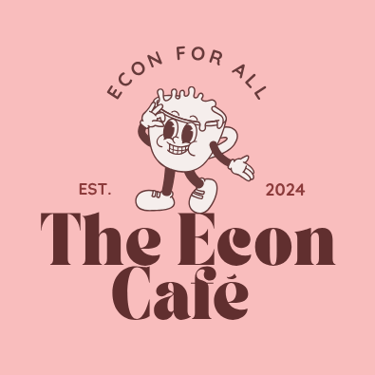Why Can’t We Just Print More Money?
BLOG
In times of economic crisis, why don’t governments just print more money? It seems like a simple fix, right?
At some point, we’ve all wondered: in times of economic crisis, why don’t governments just print more money? It seems like a simple fix, right? But then someone inevitably replies — usually with a smug tone — “Actually, it’s because of inflation. If we print too much, money loses its value.” But what exactly is inflation? How do governments attempt to control it? Is it always detrimental to the economy? How does it start?
Inflation- according to the definition used when answering questions in my exams- is a sustained increase in the general price level. In simple terms, it means that for extended periods, things become more expensive. The “general price level” refers to the average of current prices of all the goods and services produced in an economy. It is a measure of the overall cost of living and is often tracked by using something called a price index.
One of the most common price indexes is the Consumer Price Index (CPI). This is a weighted “basket” of goods and services — like food, transport, and housing — that reflects what the average consumer buys. It’s a measure of the overall cost of living, and when the prices in this basket go up, it means there are signs of inflation.
So, why does inflation happen in the first place? There isn’t just one reason, economists usually group the causes into two main categories: demand-pull inflation and cost-push inflation.
Demand pull Inflation: This occurs when the demand for goods and services exceeds the amount at which firms can supply them. So firms raise prices to balance demand with what they can supply. This is often due to economic stimulus, such as consumers receiving higher wages, lower interest rates, and when access to loans increases as more credit is available from banks. If the money supply grows faster than the production of goods/services, there’s more money chasing the same goods, hence higher prices. Over time, this may lead to higher prices.
Cost push inflation: This occurs when the cost of production increases. This may be due to higher costs of borrowing, raw materials used in almost every production process, such as oil, facing a price hike or overall higher taxes in place by the government. To break even or make a profit, firms increase prices.
With these higher prices also come lower purchasing power, especially for fixed-income earners as their income buys much less after the prices rise than before. In addition, it creates uncertainty and makes it difficult for businesses to plan for the future, invest in long-term projects or even set prices, as every time prices increase, they have to update their price lists. Consequently, if a country's inflation rate is higher than its trading partners, exports may become more expensive and less competitive, potentially leading to lower export sales and less income for the country- especially if there are export-reliant industries.
So, how can Inflation be controlled? There are two main tools governments and central banks use: monetary policy and fiscal policy.
Monetary policy is controlled by a country’s central bank like the Federal Reserve in the US or the Bank of England in the UK. It involves changing interest rates and influencing how much money is in the economy. When inflation is too high, central banks often raise interest rates. This makes borrowing more expensive and saving more attractive due to higher returns, so people and businesses spend less. With less demand in the economy, prices are less likely to rise. This is called contractionary monetary policy as it attempts to slow economic growth and limit demand, reducing chances of demand-pull inflation.
Fiscal policy, however, is controlled by the government. It is complementary to monetary policy when it comes to reducing inflation. It involves taxing and spending. To control inflation, a government might increase taxes or cut public spending through providing less public goods. That way, there’s less money circulating in the economy, helping bring prices back down.
Inflation can have very different impacts depending on how extreme it is and whether it’s controlled. For example, in Zimbabwe during the early 2000s, poor economic management and excessive money printing led to hyperinflation- where prices rise uncontrollably rapidly- eroding the value of its currency. When most countries have a target inflation of around 2%, Zimbabwe's national inflation was 47% by 1998. This meant the same amount of money could buy much less than it did before- eroding the value of their currency and significantly reducing their purchasing power. It had gotten so low that the Zimbabwean dollar had to be replaced by various foreign currencies.
On the other hand, slight inflation is often desirable. After the 2008 global financial crisis, many governments used controlled inflation and stimulated the economy to avoid deflation (the opposite of inflation, falling prices). This encouraged people to spend money instead of hoarding it, keeping the economy active and reducing the real value of the debt burden people were facing.
In conclusion, while printing more money might seem like an easy solution during economic crisis, it usually leads to higher inflation if not matched by real economic growth, especially if individuals' incomes don't increase by the same amount of inflation faced by the economy. A little inflation is normal and can even help an economy grow steadily, but when it spirals out of control, it can cause serious harm- as seen in Zimbabwe. This is why governments and central banks work hard to strike a balance: encouraging enough spending and investment to support growth, while keeping inflation within safe limits to protect people’s purchasing power.
